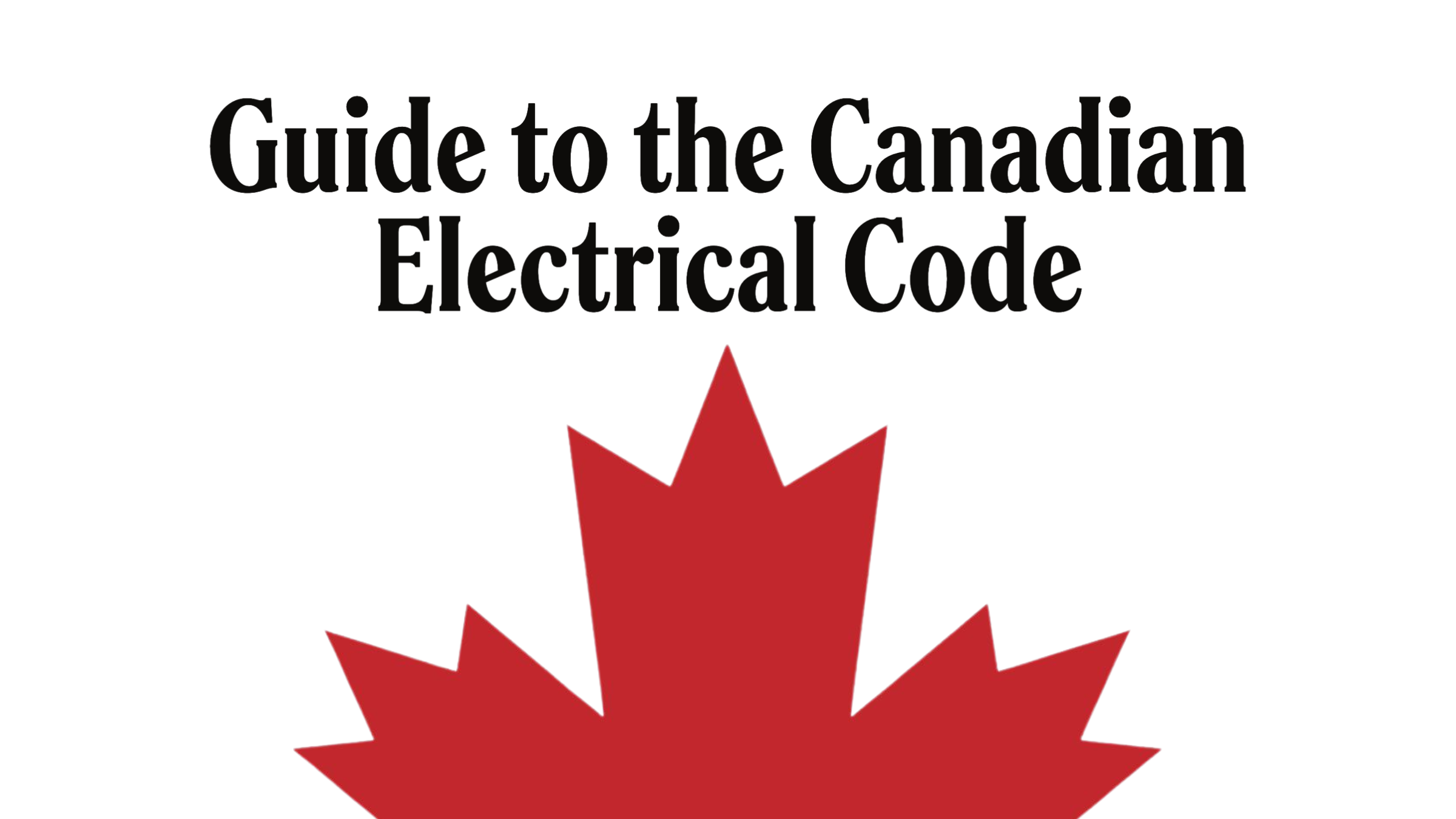Guide to the Canadian Electrical Code, Part 1[i], 26th Edition – A Road Map: Section 22

by William (Bill) Burr[ii]
Section 22 – Locations in which corrosive liquids, vapours, or excessive moisture are likely to be present.
The Code is a comprehensive document. Sometimes it can seem quite daunting to quickly find the information you need. This series of articles provides a guide to help users find their way through this critical document. This is not intended to replace the notes in Appendix B, or the explanations of individual requirements contained in the CEC Handbook but will hopefully provide some help in navigating the Code.

General
Rule 22-000 outlinesthe Scope of Section 22 and that it amends or supplements the general requirements of the code. It provides specific rules for locations classified as Category 1 (moisture) or Category 2 (corrosive) environments that are significant enough to interfere with normal operation of electrical equipment.
Rule 22-002 defines locations:
- Category 1 location is defined as one where moisture in the form of vapour or liquid is present. The moisture can be caused by condensation, dripping or splashing of liquid, or other means.
- Category 2 location is defined as one where corrosive liquids or vapours are likely to be present. Appendix B contains examples of some Category 1 and 2 locations.
Rule 22-004 outlines that where neither Category is mentioned in a rule in this section, then the rule applies to both categories
Equipment
Rule 22-100 requires that only equipment that is essential to the process being carried out in that area may be located in a Category 1 or 2 location, as per Appendix B and Table B22-1. Service equipment, motors, panelboards, switchboards, and similar equipment need to be installed outside the Category area. This includes any enclosures containing molded case circuit breakers in a Category 2 location, unless they have been marked as suitable for that application, because internal corrosion can occur.
Rules 22-102 (1) to (6) outline the types of construction required of equipment to be installed in the various moist or corrosive atmospheres. Electrical equipment located in a Category 1 location must be suitable for wet locations. Electrical equipment located in a Category 2 location must be corrosion resistant. Where the electrical equipment is, or is likely to be, partially or wholly submerged, it must be of a submersible type of construction. This information is marked on the equipment, if not self-evident.
Rules 22-104 to 22-108 specify requirements for pendant lampholders, luminaires, wiring devices, connectors, flexible cords, and portable power cables to be installed or used in Category 1 or Category 2 locations. Appendix B notes provide additional information on assemblies and devices suitable for corrosion and moisture locations typically marked with Type 4X or 3X ingress protection in accordance with Table 65.
Wiring
Rule 22-200 provides the requirements for wiring in Category 1 locations. Generally, insulated conductors and cables must be selected in accordance with Rule 4-008(1) and Table 19.
Note that NM cable must be NMU or NMWU, MI cable must be spaced 6mm from any wall at supports, and aluminum conductors must have joints adequately sealed against moisture.
Rule 22-202 provides the requirements for wiring in Category 2 locations. All insulated conductors and cables must have protection from corrosion. NMW and NMWU cable is permitted. Raceways, Insulated Conductors, and cables may only be used as permitted by Table 19. MI, alu-sheathed and copper-sheathed cable must be suitably corrosion protected. Any termination or joint of aluminum conductors must be adequately sealed against ingress of corrosive liquids or vapours.
Rule 22-204 deals with wiring in curling or skating rinks. Generally, lighting areas are subject to condensation so wiring must be selected in accordance with Rule 4-008(1) and Table 19 for wet locations. Other areas may be wired in accordance with Section 12, observing any moisture conditions. Areas with adequate mechanical ventilation (at least three changes per hour) may be considered dry locations.
Drainage, sealing, and exclusion of moisture and corrosive vapour
Rules 22-300 and 22-302 specify methods for excluding moisture and corrosive vapours from entering conduit, insulated conductors and cables, equipment, or locations through the use of suitable fittings, drip loops, adequate drainage, sealing, and orientation.
Circuit control
Rule 22-400 requires that each circuit in a Category 1 or 2 location must be capable of being de-energized from outside the location.
Materials
Rule 22-500 specifies that all metal materials including conduit, enclosures, and even every nut, bolt and screw must be corrosion protected or resistant to the specific corrosive environment.
Bonding
Rule 22-600 requires all non-current carrying metal parts of equipment must be bonded to ground as per Section 10.
Sewage lift and treatment plants
Rules 22-700 to 22-710 apply to installations in sewage lifts, pumping stations and treatment plants where moisture, corrosion, explosions, fire, and atmospheric poisoning can occur.
Note that the rules of Section 18 apply to associated methane gas generating facilities.
Rule 22-702 outlines some special terminology used in this subsection to define continuous positive pressure ventilation, dry well, suitably cut off, and wet well.
Rule 22-704 provides guidelines for the classification of sewage lift and treatment plants wet wells, with adequate ventilation, and locations below ground either suitably cut off from locations in which sewage gases may be present or may be present in explosive concentrations. These types of areas may be both Category 1 or 2, and hazardous locations under Section 18. Reference material for hazardous area classification can be found in NFPA 820. Appendix B also has some notes regarding safety issues in these types of facilities.
Rule 22-706 specifies that wiring methods in these types of areas shall be in accordance with Rules 22-200, 22-202 or Section 18 depending on the location classification. Note that there are some restrictions, conditions and special handling for metal conduit, tubing, armoured cable, mineral-insulated cable, aluminum sheathed cable, and copper-sheathed cable.
Electrical equipment
Rule 22-708 specifies that electrical equipment in these types of areas shall be in accordance with the other applicable sections of the code or Section 18, depending on the location classification.
Note that there are some restrictions, conditions and special handling for receptacles, lighting switches, unit emergency lighting equipment, emergency lighting control units, heating equipment, motors, and any electrical equipment in a wet well.
Also note in sub-rule 22-708(4) that ventilation fans must not be located in a wet well. One other significant sub-rule 22-708(5) requires that areas provided with continuous positive ventilation must be interlocked to de-energize all electrical equipment if the ventilating equipment becomes inoperative, unless the electrical equipment in that area is marked for use in an explosive gas atmosphere location.
Rule 22-710 requires all structural steel below ground, in contact with earth, to be bonded to the system ground.
Farm buildings housing livestock
Rules 22-800 to 22-808 set requirements for electrical equipment and installation in farm buildings housing livestock. Appendix B notes that the National Building Code defines
Farm Building as a building or part thereof that does not contain a residential occupancy and
that is associated with and located on land devoted to the practice of farming and used essentially for the housing of equipment or livestock, or the production, storage or processing of agricultural and horticultural produce or feeds.
Rule 22-802 provides new terminology used in this sub-section that are not contained in Section 0, and include definitions for:
- Wash-down — cleaning that includes direct spray of liquid under pressure,
- Specialty type equipment — equipment designed and used for a specific and unique agricultural purpose,
- Suitably cut off, — an area that is separated from and rendered impermeable to an adjoining area with no means of liquid, gas, or vapour communication between the areas at atmospheric pressure. and
- Livestock — farm animals including, but not limited to, cattle, horses, swine, sheep, goats, poultry, ratites, cultured fish, fur-bearing animals, game animals, game birds, deer, elk, and bees. Appendix B notes that the definition for Livestock is not intended to include pets.
Rule 22-804 sets out the Classification of these areas as either Category 1 or Category 2 as per Rule 22-100, and notes that locations in a farm building suitably cut off from a Category 1 or 2 location are considered dry locations.
Rule 22-806 requires that electrical equipment, except specialty equipment, be installed in accordance with Rules 22-102 to 22-108 above and additionally requires that:
- wire connectors for permanently connected equipment contain anti-corrosion compound,
- electrical equipment incorporating overcurrent devices be installed in locations suitably cut off from Category 1 or Category 2 locations, or in enclosures with continuous positive pressure ventilation in as per Rule 22-702,
- receptacles and general use switches installed in a wash-down area be protected by a suitable enclosure as per Rule 2-400, and
- exposed lamps be shatter-resistant and not a pendant lampholder.
Rule 22-808 outlines that:
- wiring methods be in accordance with Rule 22-202 except that EMT not be used,
- grounding and bonding conductors be insulated or have corrosion protection, and all exposed connections have corrosion protection,
- aluminum conductors not be used, except for feeders supplying panelboards as per Rule 22-806,
- cables without metallic armour be protected from rodents by rigid steel or rigid non-metallic conduit when installed less than 300 mm above any horizontal surface, on the side of floor joists less than 100 mm below upper surface of floor joists, in attics or concealed spaces, and
- all raceways, fittings, junction boxes, cable assemblies and associated connectors, devices and covers be corrosion resistant.
Previous Installment: Section 20 – Flammable liquid and gasoline dispensing, service stations, garages, bulk storage plants, finishing processes, and aircraft hangars.
In the next instalment we will be discussing Section 24 – Patient care areas.
[i] Source: CSA C22.1:24, Canadian Electrical Code, Part 1 – Safety Standard for Electrical Installations. © 2021 Canadian Standards Association. Please visit Store – CSA Group or call 1-800-463-6727. With the permission of CSA Group, the material is reproduced from CSA Group standard CSA C22.1:21, Canadian Electrical Code, Part 1 – Safety Standard for Electrical Installations. This material is not the complete and official position of CSA Group on the referenced subject, which is represented solely by the Standard in its entirety. While use of the material has been authorized, CSA Group is not responsible for the manner in which the data are presented, nor for any representations and interpretations. No further reproduction is permitted. For more information or to purchase standard(s) from CSA Group, please visit Store – CSA Group or call 1-800-463-6727.
[ii] William (Bill) Burr is an associate member of the Canadian Electrical Code, Part 1, Technical Committee and formerly Chair of the Canadian Advisory Council on Electrical Safety (CACES), Chief Electrical and Elevator Inspector for the Province of BC & the Northwest Territories, Director of Electrical and Gas Standards Development and Director of Conformity Assessment at CSA Group. Bill can be reached at Burr and Associates Consulting billburr@gmail.com..

















